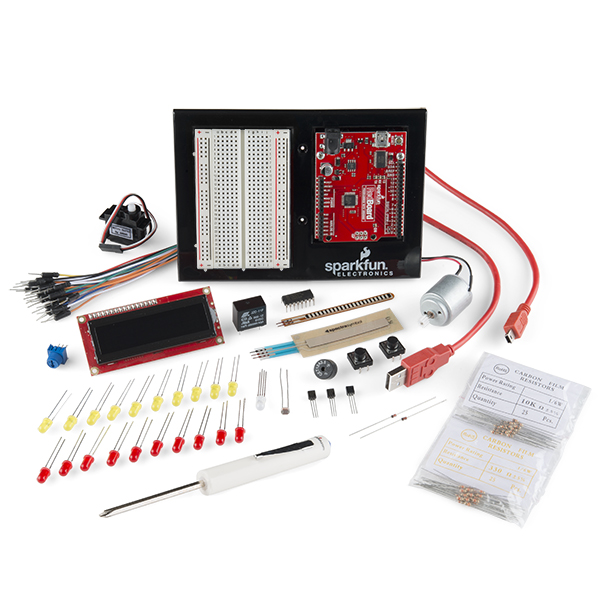
- an arduino
- a breadboard
- cable
- a very good guide
- an LCD screen
- lots of components to get through the core concepts of Arduino, like analog to digital, serial read, digital to digital: LED's, resistors, pushbuttons, and a series of sensors that offer opportunities for students to understand how to convert the analog world of what's around them to a set value
In water, those parameters will include temperature, ph, and conductivity. In air, carbon monoxide, carbon dioxide, and ozone. We hope to get other parameters in our project as we progress.
For example, a CO2 sensor will return a dimensionless value somewhere between 0 and 5 volts. It will be up to the kids to turn it into a usable value that prints out, such as parts per million (ppm).
At the Sparkfun training, one veteran teacher and I were discussing my project, and he said, when you start having to calibrate, or in other words, find your "k" (constant), you're on the road to real science.
I'm not a math guy. Wish me luck.
